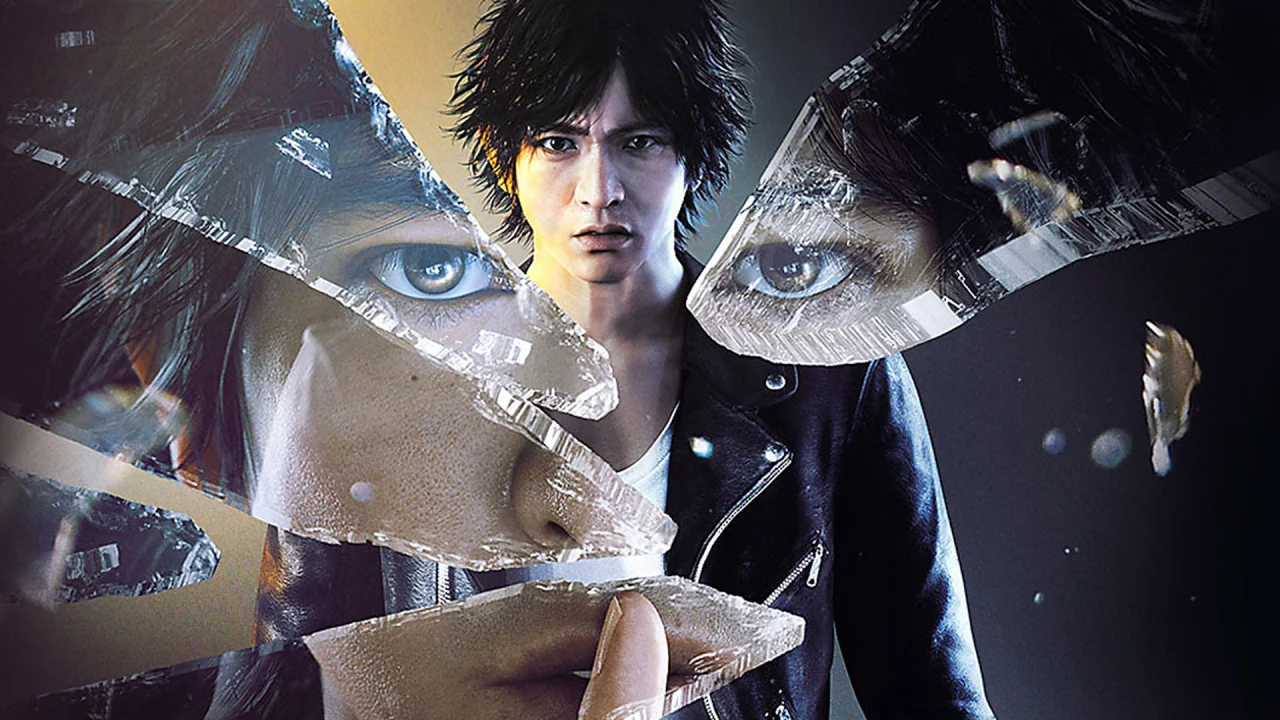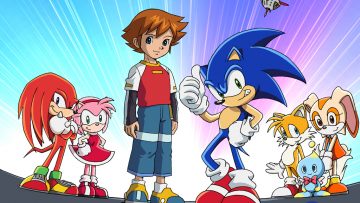
Review: Judgment (Playstation 4)
“You’re writing a Judgment review now?” you may ask. “That game came out almost nine months ago.”
It’s true. I’ve had Judgment since a week after its release. I don’t know if I have a good excuse for this review taking so long. When other sites talk about metrics for when the best time to publish a review is, it’s always within the first 48 hours of release. After that, the returns diminish very quickly.
The fact of the matter is, I was a little afraid of Judgment. It’s a spinoff of the Yakuza franchise, and it’s the first one of these games I’ve ever played for myself. I’ve seen lots of Yakuza gameplay over the years — I watched someone play through all of Yakuza 4 and Yakuza Zero, for example. I know the characters, and the stories, and because of that, I know they tend to be very long, very involved, very intricate games. They were once spun as “Japan’s Grand Theft Auto.” There is no shortage of takes about how wrong that claim is, and true enough, there is no direct, 1:1 comparison between Grand Theft Auto and Yakuza. But on a wider, deeper, primal level, I think the comparison still holds true.
Both franchises are open world, both deal with people struggling to leave behind a life of crime. Both are cinematic almost to a fault. It’s just that Grand Theft Auto is distinctly western — it’s about guns, it’s about stealing, it’s about being crude and nihilistic. Yakuza is more like an RPG, levelling up melee skills, doing side quests, talking to people around town, and being a hero with a heart of gold in spite of those criminal origins. In some ways, it’s almost as much Skyrim as it is GTA.
Regardless, these are not easy games to put down. Though I had friends assure me over and over and over that a game like Judgment can be completed in under 30 hours, that’s not how I play. I am a tourist when I play these games. I like to sift through worlds brick by brick, absorbing them as a unified place. And though the made-up Kamurocho (think GTA’s Los Santos vs. the real-life Los Angeles) in both Yakuza and Judgment isn’t terribly big — about two square miles, roughly — it is densely packed with shops, arcades, casinos and eateries, many of which are functional and contain their own unique side stories. Plus, you’re talking to the guy who takes 80+ hours to finish even the shortest Grand Theft Auto games. It would feel like a betrayal of who I am to rush through Judgment just to see the credits as soon as possible.
Similar feelings have put me off from playing games like Xenoblade Chronicles or Persona. I’d love to play those games, but I’m afraid of the time commitment. Still, given that Judgment is a full one third of how long it takes to finish those two games, I figured I could chip away at it, bit by bit. But, sadly, other things just kept getting in the way. Days would pass, sometimes even several weeks, before I was in a position to play more Judgment.
And I’ll admit to you right now — I’m writing this review still not having finished Judgment. I am, however, more than halfway through the game, which rates at over 23 hours on my play time clock. More than enough to have a clear picture of what the game is all about.
As far as the Yakuza series goes, this is a good game for newbies. The main Yakuza series carries a lot of baggage to sift through, considering its eight mainline games and large cast of returning characters. Some Yakuza games even include multiple “recap” videos totaling over an hour in length just to bring you up to speed with who’s who. Judgment is very much Yakuza adjacent — same locations, even a lot of the same mob clans, but it’s completely divorced from the adventures of Yakuza’s Kazuma Kiryu and friends. Judgment is an isolated, complete story, making it easy to get into and out of cleanly.
Gameplay largely consists of staple Yakuza elements: you roam around Kamurocho, talk to people, take on quests, and get in street fights with mobster goons as you make your way through the game’s central plot. Where things differ from Yakuza has to do with who you play as this time around: a disgraced lawyer turned private detective named Takayuki Yagami.
In Yakuza, all of the side activities were built up around somewhat seedy dealings. You’d collect money on property, run hostess clubs (strip clubs minus nudity), participate in underground fighting tournaments, and generally operate as a one-man mafia. Being a detective, Yagami’s role is much more investigative. Yagami still has connections to local crime syndicates, and you still get in fights regularly, but the perspective of this narrative is pretty different from standard Yakuza fair. One moment you might be piloting a remote controlled drone to spy on a syndicate HQ, picking locks to enter restricted areas, putting on a disguise for an undercover stake out, or collecting crime scene evidence for one of the game’s many deduction sequences.
Yagami does not work alone, either. You’ll link up with hackers to help triangulate phones, deal with dirty cops who will sell confidential information under the table, and, of course, encounter members of the yakuza. So, so many yakuza. Though Yagami himself is not technically part of the yakuza, he has roots in the mob, and his role sees him working for (and against) members of the yakuza almost constantly. Much of the game’s story involves navigating various clan disputes in the midst of hunting down a serial killer that focuses exclusively on murdering members of the crime syndicate.
It’s tense and dramatic, but it can feel a bit overwhelming at times. There are a lot of characters to keep track of in something like this — the regulars down at the bar, members of the police force, Yagami’s former co-workers in the court system, and the gigantic power structure of known criminals involved in the case. Though I was invested in seeing everything wrap up, I have to admit that after a certain point, Judgment’s non-stop list of names and mobster ranks started going in one ear and out the other. It’s usually pretty good at reintroducing characters you haven’t seen in a while, but there were still times when names came up during the story and I had to stop and ask myself, “Wait, who’s that again?”
Something else that separates Judgment from the Yakuza series is the inclusion of English language dub audio. Though the very first Yakuza game was dubbed into English (notoriously with Hollywood actors), the series became better known as something that got a lot of mileage out of keeping its original Japanese audio both as a stylistic choice and budgetary concern. That’s always been fine by me, given a large portion of the Yakuza franchise is more about reading dialog anyway. But I’ll still admit the English dub here is much appreciated. Sega’s recent trend for stellar localizations is present and accounted for, and the actors handle the material very well. For Yakuza purists, the option to switch back to Japanese audio still exists, though I can’t imagine playing Judgment in any other language besides English at this point.
Visually, Judgment is razor sharp, with incredibly high detail textures, visually rich lighting and impressive looking character models. That being said, Kamurocho has spanned three hardware generations now, and one gets the impression that they’ve been upgrading the map as they go. There are definitely places that seem to have received more effort than others, as you’ll occasionally find a blurry storefront or a pixelated billboard hidden around less-trafficked back streets.
Character models have their sticking points, too. Though people can almost appear photo-realistic in certain conditions, they are held back by stiff, dated animation. The biggest issue is in faces — characters will often shift between different facial emotions in an incredibly rigid, robotic way, and nobody ever seems quite as expressive as they should be. Eyes are a problem, too, as people frequently seem to lack eye contact and stare off into space. Some of this is down to the sheer number of cinematics in this game — when we’re talking 10+ hours of cutscenes, compromises have to be made somewhere. Important scenes definitely contain more detailed animations than a side quest involving a fast food advertising campaign. But the animation in Judgment overall still feels a little more rigid than I’d like.
That’s only really a problem in cutscenes, though. In terms of gameplay, Judgment feels pretty good to control. Fights are the real meat of this game, and though Judgment isn’t quite Bayonetta or anything, there’s lots of variety and plenty of skills to unlock. Yagami has two fighting stances, each with their own pros and cons, and the over-the-top Yakuza-staple “Heat Moves” are ever present (now renamed to “EX Moves”). Mastering combat is pretty essential as well, given Judgment isn’t afraid to put the screws on you — about the time the Keihin Gang gets involved and you have powerhouse bodybuilders roaming the streets looking to throw down with Yagami, the going gets tough.
Outside of combat, Yagami can feel a little sluggish when running around town, and unfortunately the private investigator angle lends itself to far too many missions where you must track a suspect. If you hate missions where you must follow behind targets in secret, or even chase them down at high speed, know that Judgment has a lot of that. I’m particularly tired of secretly following people, and it’s a bummer that there’s often two or three of those missions per chapter. The quality of the writing and the fun combat definitely make up for it, but I wish they would have found a way to limit those types of missions.
All of this isn’t even touching on Judgment’s ancillary purpose as a retro game compilation. Earlier I mentioned there were functional arcades in Kamurocho, and contained inside are multiple classic and modern Sega arcade games. Not only do you get mainstays like Space Harrier and Fantasy Zone, but you get an arcade version of Puyo Puyo, and on top of that, versions of Fighting Vipers and Virtua Fighter 5 with online multiplayer. If that wasn’t enough, Judgment debuts the first-ever home port of Motor Raid, a previously Japan-exclusive arcade game from 1997. Having the opportunity to play these classic Sega games is practically worth the price of admission by itself. Judgment also contains a few original games, as well — such as Kamuro of the Dead, a faux-lightgun shooter in the style of Sega’s House of the Dead, but re-using assets from a previous Yakuza spinoff (Dead Souls) instead.
Judgment is a tremendous game. Though not all of its parts are perfectly tuned, for a game of this size, and this complexity, you have to take some bad with the good. Fortunately, what’s good about Judgment far, FAR outweighs a couple of bogus mission types or some stiff animations. If you’ve been on the fence about trying the Yakuza series, Judgment makes a great place to get your feet wet without having to untangle the epic saga of Kazuma Kiryu. And for Yakuza veterans, Judgment offers enough twists on the formula to feel like its own entity. This is a delightfully dense game, bulked up with a hefty story. Don’t miss it.
This post was originally written by the author for TSSZ News.

![Private: [ID: bjJBE1I-YW8] Youtube Automatic](https://lastminutecontinue.com/wp-content/uploads/private-id-bjjbe1i-yw8-youtube-a-60x60.jpg)


![Private: [ID: hMygvtWFdPI] Youtube Automatic](https://lastminutecontinue.com/wp-content/uploads/2023/02/private-id-hmygvtwfdpi-youtube-a-360x203.jpg)
![[ID: eISiAxtBQzg] Youtube Automatic](https://lastminutecontinue.com/wp-content/uploads/2024/04/id-eisiaxtbqzg-youtube-automatic-360x203.jpg)
